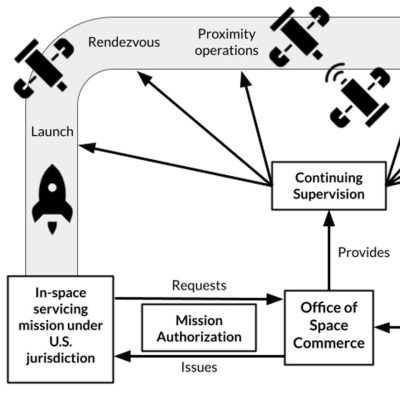
With new heat treatment, 3D-printed metals can withstand extreme conditions
A new MIT-developed heat treatment transforms the microscopic structure of 3D-printed metals, making the materials stronger and more resilient in extreme thermal environments. The technique could make it possible to 3D print high-performance blades and vanes for power-generating gas turbines and jet engines, which would enable new designs with improved fuel consumption and energy efficiency.
Today’s gas turbine blades are manufactured through conventional casting processes in which molten metal is poured into complex molds and directionally solidified. These components are made from some of the most heat-resistant metal alloys on Earth, as they are designed to rotate at high speeds in extremely hot gas, extracting work to generate electricity in power plants and thrust in jet engines.
There is growing interest in manufacturing turbine blades through 3D-printing, which, in addition to its environmental and cost benefits, could allow manufacturers to quickly produce more intricate, energy-efficient blade geometries. But efforts to 3D-print turbine blades have yet to clear a big hurdle: creep.
In metallurgy, creep refers to a metal’s tendency to permanently deform in the face of persistent mechanical stress and high temperatures. While researchers have explored printing turbine blades, they have found that the printing process produces fine grains on the order of tens to hundreds of microns in size — a microstructure that is especially vulnerable to creep.
“In practice, this would mean a gas turbine would have a shorter life or less fuel efficiency,” says Zachary Cordero, the Boeing Career Development Professor in Aeronautics and Astronautics at MIT. “These are costly, undesirable outcomes.”
Cordero and his colleagues found a way to improve the structure of 3D-printed alloys by adding an additional heat-treating step, which transforms the as-printed material’s fine grains into much larger “columnar” grains — a sturdier microstructure that should minimize the material’s creep potential, since the “columns” are aligned with the axis of greatest stress. The researchers say the method, outlined today in Additive Manufacturing, clears the way for industrial 3D-printing of gas turbine blades.
“In the near future, we envision gas turbine manufacturers will print their blades and vanes at large-scale additive manufacturing plants, then post-process them using our heat treatment,” Cordero says. “3D-printing will enable new cooling architectures that can improve the thermal efficiency of a turbine, so that it produces the same amount of power while burning less fuel and ultimately emits less carbon dioxide.”
Cordero’s co-authors on the study are lead author Dominic Peachey, Christopher Carter, and Andres Garcia-Jimenez at MIT, Anugrahaprada Mukundan and Marie-Agathe Charpagne of the University of Illinois at Urbana-Champaign, and Donovan Leonard of Oak Ridge National Laboratory.
Triggering a transformation
The team’s new method is a form of directional recrystallization — a heat treatment that passes a material through a hot zone at a precisely controlled speed to meld a material’s many microscopic grains into larger, sturdier, and more uniform crystals.
Directional recrystallization was invented more than 80 years ago and has been applied to wrought materials. In their new study, the MIT team adapted directional recrystallization for 3D-printed superalloys.
The team tested the method on 3D-printed nickel-based superalloys — metals that are typically cast and used in gas turbines. In a series of experiments, the researchers placed 3D-printed samples of rod-shaped superalloys in a room-temperature water bath placed just below an induction coil. They slowly drew each rod out of the water and through the coil at various speeds, dramatically heating the rods to temperatures varying between 1,200 and 1,245 degrees Celsius.
They found that drawing the rods at a particular speed (2.5 millimeters per hour) and through a specific temperature (1,235 degrees Celsius) created a steep thermal gradient that triggered a transformation in the material’s printed, fine-grained microstructure.
“The material starts as small grains with defects called dislocations, that are like a mangled spaghetti,” Cordero explains. “When you heat this material up, those defects can annihilate and reconfigure, and the grains are able to grow. We’re continuously elongating the grains by consuming the defective material and smaller grains — a process termed recrystallization.”
Creep away
After cooling the heat-treated rods, the researchers examined their microstructure using optical and electron microscopy, and found that the material’s printed microscopic grains were replaced with “columnar” grains, or long crystal-like regions that were significantly larger than the original grains.
“We’ve completely transformed the structure,” says lead author Dominic Peachey. “We show we can increase the grain size by orders of magnitude, to massive columnar grains, which theoretically should lead to dramatic improvements in creep properties.”
The team also showed they could manipulate the draw speed and temperature of the rod samples to tailor the material’s growing grains, creating regions of specific grain size and orientation. This level of control, Cordero says, can enable manufacturers to print turbine blades with site-specific microstructures that are resilient to specific operating conditions.
Cordero plans to test the heat treatment on 3D-printed geometries that more closely resemble turbine blades. The team is also exploring ways to speed up the draw rate, as well as test a heat-treated structure’s resistance to creep. Then, they envision that the heat treatment could enable the practical application of 3D-printing to produce industrial-grade turbine blades, with more complex shapes and patterns.
“New blade and vane geometries will enable more energy-efficient land-based gas turbines, as well as, eventually, aeroengines,” Cordero notes. “This could from a baseline perspective lead to lower carbon dioxide emissions, just through improved efficiency of these devices.”
This research was supported, in part, by the U.S. Office of Naval Research.

